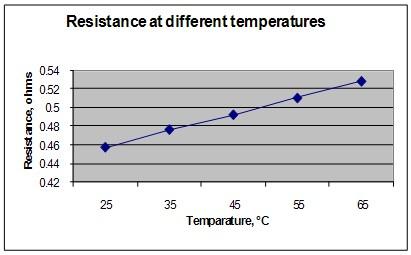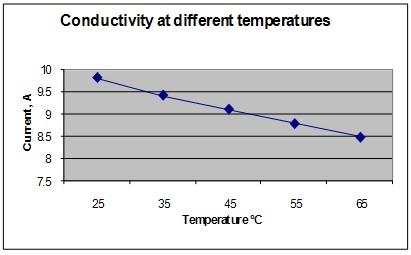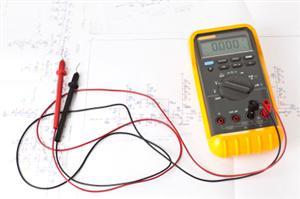| Complexity level: | 8 |
| Project cost ($): | 20 |
| Time required: | 1 hour to prepare, 1 hour for the science project experiment |
| Material availability: | Easily found |
| Safety concerns: | Basic safety requirements |
Hypothesis
As the temperature of a wire increases, the resistance of the wire will also increase and therefore the conductivity of the wire will fall.
Overview
Resistance and conductivity
The resistance of a conductor is a measure of the opposition to the current flowing in it. The resistance will increase as the length of the conductor is increased and the resistance falls as the diameter of the conductor increases. The value of resistance is measured in ohms.
Electrical conductivity measures the ability of a conductor to current to flow in it. Therefore conductivity is the inverse of resistance. The higher the resistance of the wire, the lower the conductivity will be.
Resistance = 1 / Conductivity
Ohm’s Law states that when a current (I), measured in amperes, flows inside a conductor of resistance (R), measured in ohms, the voltage (V) measured in volts, across the wire, will be the product of the current and the resistance.
Voltage V = Current I x Resistance R
Scientific Terms
Materials
science fair projectThe materials required for this science fair project:
- 5 meters of varnish insulated copper wire with a diameter of 0.5mm (can be purchased from motor rewinding workshops)
- A PVC pipe about 300mm in length
- Three 1.5V batteries and the casing to hold the batteries
- 3 jumper wires with crocodile clip at both ends
- An ohm meter
- An ammeter that can measure currents up to 10A
- A paper cutter
- An infrared thermometer
- 1 roll of insulation tape
Procedure
1. For this science fair project, the independent variable is the temperature of the copper wire. The dependent variable is the resistance of the wire. This is determined by measuring the current and resistance of the wire. The constants (control variables) are the room temperature, the applied voltage, the diameter of the wire and the length of the wire.
2. The wire with a length of 5 meters is wound around the PVC pipe. The ends of the wire are fixed to the pipe using the insulation tape. About 3 cm of insulation is removed from the wire tips using the paper knife. The resistance of the wire is measured using the ohm meter.
3. The 3 batteries are connected in series to produce 4.5V. The ammeter, batteries and wire wound around the pipe are connected as shown in figure 1. The connection is made using the jumper wires. This creates an electromagnetic field around the PVC pipe.
4. The initial reading shown on the ammeter is recorded in the table below. As the current flows through the electromagnet's wire, the temperature of the wire will increase. This temperature is measured using the infrared thermometer. As the temperature increases 10°C, the ammeter reading is recorded, and the wire is disconnected from the circuit and its resistance is immediately measured using the ohm meter.
5. Procedure 4 is repeated as the temperature of the wire increases every 10°C until the highest temperature is reached.



Results
It is observed that as the temperature of the wire increases, the resistance of the wire also increases but the current flowing in the wire falls.
| Wire temperature °C | Voltage (Volt) | Current (Ampere) | Resistance (ohm) |
| 25 | 4.5 | 9.82 | 0.458 |
| 35 | 4.5 | 9.43 | 0.477 |
| 45 | 4.5 | 9.12 | 0.493 |
| 55 | 4.5 | 8.80 | 0.511 |
| 65 | 4.5 | 8.50 | 0.529 |
The graph below represents the results of our science project experiment.
Conclusion
Our hypothesis has been proven to be true. As the temperature of the wire increased, he resistance of the wire increased and its conductivity fell.
The temperature of the wire increases due to its copper loss, which is calculated as I2x R., where I is the electric current flowing through the wire and R is its resistance. The higher the current in the wire or the higher the resistance, the higher the temperature of the wire. Therefore it is important to choose the correct wire size to minimize this unwanted loss and also prevent the risk of the wire burning.
Also consider
What would happen if the science fair project were to be repeated using different wire sizes?
Modify the science project experiment, using aluminum wire instead.
References
Electrical resistance - http://en.wikipedia.org/wiki/Electrical_resistance
Electrical conductivity - http://en.wikipedia.org/wiki/Electrical_conductivity

